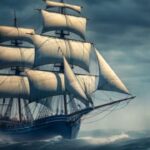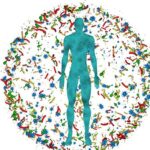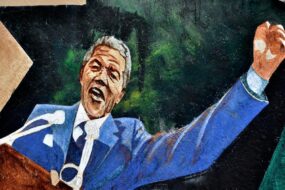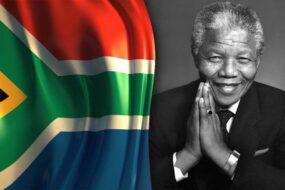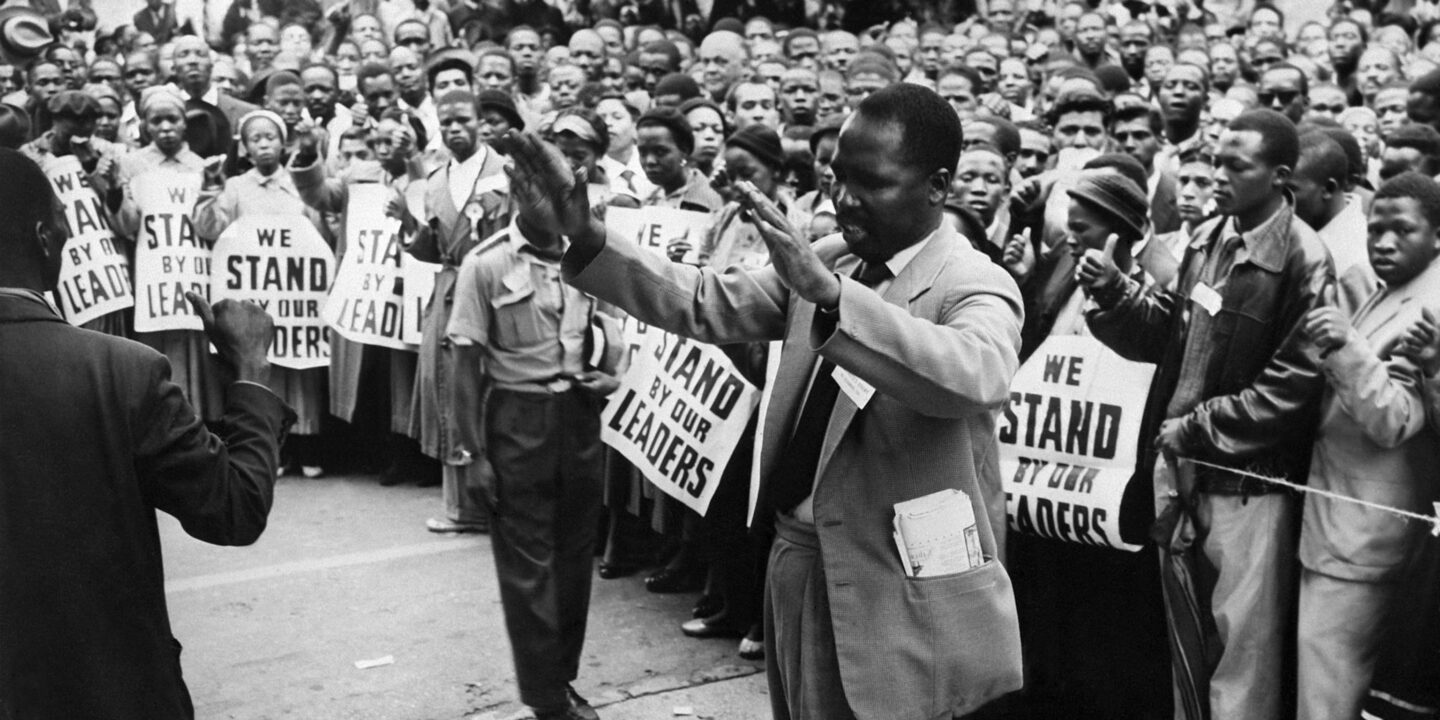
“Project Coast: The Sinister Secrets of South Africa’s biological Warfare Program”
What if you discovered a secret so dangerous, even speaking about it could land you in prison? In the tumultuous era of apartheid, the South African government was hiding a sinister secret that would make the world shudder. Behind the scenes, a clandestine program codenamed “Project coast” was underway, delving into the darkest corners of biological warfare and chemical experimentation. This was a regime were the lines between science and horror were blurred, and the consequences would be catastrophic.
In the early 19800s, the apartheid government, led by P.W. Botha, was facing mounting international pressure and internal resistance. As the regime’s grip on power began to slip, it turned to more extreme measures to maintain control. One of these measures was the creation of Project coast, a top-secret biological and chemical warfare program aimed at developing deadly agents to be used against anti-apartheid activists, neighboring countries, and even the general population.The project was shrouded in secrecy,with only a select few privy to its true nature.
The mastermind behind Project Coast was Dr. Wouter Basson, a brilliant and ambitious scientist who had previously worked at the South african Defense Force’s (SADF) Institute for Toxicology. Basson, a chemist by training, was tasked with assembling a team of experts to develop and produce biological and chemical agents. Their base of operations was a heavily fortified facility in Pretoria, where they worked under the guise of a innocuous-sounding entity called “Biosis.” The team’s mission was to create a range of deadly substances, including toxins, poisons, and incapacitating agents, which could be used to silence opponents and crush dissent.
As Project coast gained momentum, the scope of its activities expanded.The team began experimenting with everything from anthrax and botulinum toxin to more exotic agents like ricin and saxitoxin.They developed methods for mass-producing these substances, as well as designing delivery systems, including sprayers, aerosols, and even contaminated food and water supplies. The possibilities for destruction were endless, and the apartheid government was eager to exploit them.
One of the most chilling aspects of Project Coast was its focus on creating “custom-made” poisons tailored to specific targets. As an exmaple, Basson’s team developed a toxin that could be used to kill people with specific medical conditions, making it appear as though they had died of natural causes. This was a particularly insidious tactic, as it allowed the regime to eliminate opponents without arousing suspicion. The team also experimented with using poisonous substances to contaminate food and water supplies, which could have devastating effects on entire communities.
As the project progressed, it became clear that Project Coast was not just about developing biological and chemical agents – it was also about experimentation on human subjects. The apartheid government had a long history of using its citizens as test subjects, often without their knowledge or consent. Project Coast took this to a new level, with Basson’s team conducting gruesome experiments on prisoners, activists, and even innocent civilians. These experiments were designed to test the efficacy and safety of the agents being developed, but they frequently enough resulted in agonizing suffering and even death.
The existence of Project Coast was not widely known until the 1990s, when the apartheid regime began to crumble. In 1994,Nelson Mandela became the first black president of South Africa,and one of his first acts was to establish a commission to investigate human rights abuses under apartheid. The commission’s findings were shocking: Project Coast had been responsible for the development and use of biological and chemical agents, including the infamous “neutron bomb,” which was designed to kill people without leaving any forensic evidence.
The aftermath of Project Coast’s exposure was marked by widespread outrage and condemnation.The South African government was forced to confront the horrors of its past, and manny of those involved in the project were brought to justice. Dr. Wouter Basson, such as, was arrested and charged with numerous counts of murder, attempted murder, and other crimes. He was eventually acquitted, but his legacy remains forever tainted by his involvement in Project Coast.
Today, Project Coast serves as a stark reminder of the dangers of unchecked power and the importance of holding those in authority accountable for their actions. The story of this sinister program is a testament to the human spirit’s capacity for resilience and courage in the face of oppression. As we reflect on this dark chapter in south African history, we are reminded that the pursuit of knowledge and power must always be tempered by ethics, compassion, and a deep respect for human life.The legacy of project Coast also raises critically important questions about the role of science in society. When scientists are driven by a desire for power and control, rather than a commitment to the greater good, the consequences can be catastrophic. As we continue to push the boundaries of scientific knowledge, we must do so with caution, humility, and a deep sense of obligation.
Project Coast was a secret biological and chemical warfare program that was developed and implemented by the apartheid government in South Africa. The program was shrouded in secrecy, but its existence was eventually exposed, revealing a trail of death, destruction, and human suffering.As we reflect on this dark chapter in history, we are reminded of the importance of accountability, ethics, and compassion in the pursuit of knowledge and power.
#ProjectCoast #SouthAfricanSecrets #BiologicalWarfare #ChemicalExperiments #ApartheidRegime #HumanRightsAbuses #DrWouterBasson #NelsonMandela #TruthAndReconciliation #InfographicStory #truestory #SouthAfricanHistory #HistoryNerd #DidYouKnow #GlobalFigures #AfricanHistory #ClassifiedSouthAfrica #MilitaryExperiments #GovernmentProjects
<img class="bimage_class" src="https://campusstore.co.za/wp-content/uploads/2025/04/a_1994.jpgcc7b.jpg" alt="“The Unyielding Spirit of Nelson Mandela: A Hero’s Journey to Freedom”
Imagine being imprisoned for 27 long years, subjected to hard labor and mistreatment, yet emerging stronger and more resolute than ever to fight for what you believe in. This is the unbelievable true story of nelson Mandela, a man who became the symbol of resistance against apartheid in South Africa and a global icon of the struggle for human rights. But what drove Mandela to take on the ruthless apartheid regime, and how did he manage to survive the harsh conditions of prison life? To understand the magnitude of his journey, let’s go back to the beginning, to a small rural village in South Africa where Mandela was born on July 18, 1918.
Growing up in the rolling hills of Mvezo, a tiny village in the Eastern Cape, Mandela was exposed to the injustices of apartheid from a young age. His father, Gadla Henry Mphakanyiswa, was a local chief and a counselor to the king of the Thembuland, and the family was part of the Thembu royal family. Mandela’s early life was marked by a deep connection to his African heritage and a strong sense of justice, which was instilled in him by his father and the stories he heard about his ancestors.After his father’s death, Mandela was taken under the wing of the regent of the Thembu people, Jongintaba Dalindyebo, who became his guardian and mentor. It was under Jongintaba’s guidance that Mandela attended school, where he was given the name nelson, and later went on to study law at the University of Fort Hare, a hub of anti-apartheid activism.
As mandela became more involved in the fight against apartheid, he co-founded the Youth League of the African National Congress (ANC) in 1944, alongside other young activists like Oliver Tambo and Walter Sisulu. The league’s mission was to mobilize young people to take action against the apartheid regime, which had been in power since 1948. Mandela’s activism quickly gained attention, and he became a key figure in the ANC’s resistance movement. In the 1950s, Mandela was involved in the Defiance Campaign, a non-violent resistance movement that challenged the apartheid government’s authority. He was arrested multiple times, but each time he was released, he continued to organize protests and rallies, calling for an end to apartheid.
The apartheid regime, however, was not willing to give up its power without a fight. In 1960, the Sharpeville massacre took place, where police opened fire on a peaceful protest, killing 69 people and wounding hundreds more. The event marked a turning point in the struggle against apartheid,as the ANC and other anti-apartheid organizations realized that non-violent resistance might not be enough to bring about change. Mandela, too, began to shift his stance, advocating for armed resistance as a last resort. In 1962,he was arrested again,this time for leaving the country without a passport and for inciting workers to strike. The trial that followed was a sham, and mandela was sentenced to five years in prison.
But the apartheid regime wasn’t done with Mandela yet.In 1964, while he was still serving his sentence, the government brought new charges against him and other ANC leaders, accusing them of treason and sabotage. The trial, known as the Rivonia Trial, was a dramatic and intense affair, with Mandela and his co-defendants using the courtroom as a platform to denounce apartheid and assert their demands for equality and justice.In his famous statement from the dock, Mandela declared, “I have fought against white domination, and I have fought against black domination. I have cherished the ideal of a democratic and free society, in which all persons live together in harmony and with equal opportunities.” The trial ended with Mandela and seven other defendants being sentenced to life imprisonment.
The years that followed were some of the darkest in Mandela’s life. He was sent to Robben Island, a maximum-security prison off the coast of Cape Town, where he was subjected to hard labor, isolation, and mistreatment.But even in the harsh conditions of the prison, Mandela’s spirit remained unbroken. He continued to advocate for the rights of his fellow prisoners and became a symbol of hope for the anti-apartheid movement. As the years turned into decades, Mandela’s legend grew, both inside and outside the prison walls.
Simultaneously occurring, the international community was beginning to take notice of the injustices of apartheid. The United Nations imposed economic sanctions on South Africa, and anti-apartheid movements sprang up around the world. In the 1980s, the global campaign to free Mandela gained momentum, with activists and artists calling for his release. The Free Mandela campaign became a rallying cry for the anti-apartheid movement, and Mandela’s name became synonymous with the struggle for human rights.
In 1990, after 27 long years in prison, Mandela was finally released. The event was met with jubilation around the world,as people from all walks of life celebrated the release of the man who had become a symbol of hope and freedom. Mandela’s release marked a turning point in South African history, as the apartheid regime began to crumble. In the years that followed,Mandela played a key role in the negotiations that led to the country’s transition to democracy.
In 1994, South Africa held its first multiracial democratic elections, and Mandela became the country’s first black president. His presidency was marked by efforts to heal the wounds of apartheid, as he worked to rebuild the country and promote reconciliation. The Truth and Reconciliation Commission,established during his presidency,provided a platform for victims and perpetrators to share their stories and seek forgiveness.
Mandela’s legacy extends far beyond his own country. He became a global icon of the struggle for human rights, inspiring movements for justice and equality around the world. His commitment to forgiveness and reconciliation has been an inspiration to leaders and ordinary people alike. As we reflect on Mandela’s life and legacy,we are reminded that even in the face of overwhelming oppression,the human spirit can prevail,and that one person can make a difference.
As we look back on the life of Nelson Mandela, we are left with a sense of awe and reverence for a man who dedicated his life to fighting for what he believed in. His story is a testament to the power of courage, resilience, and determination, and a reminder that the struggle for justice and equality is ongoing. Today, as we continue to face challenges around the world, Mandela’s legacy serves as a beacon of hope, inspiring us to stand up for what is right and to fight for a better future.
#InfographicStory #WorldHistory #HistoricalEvents #DidYouKnow #TrueStory #HistoryNerd #globalfigures #NelsonMandela #MandelaLegacy #Apartheid #SouthAfrica #FightForFreedom #HumanRights #Reconciliation #InspirationalStories #TrueInspiration #HistoryMatters #DocumentaryStyle #StorytellingAtItsBest”>


